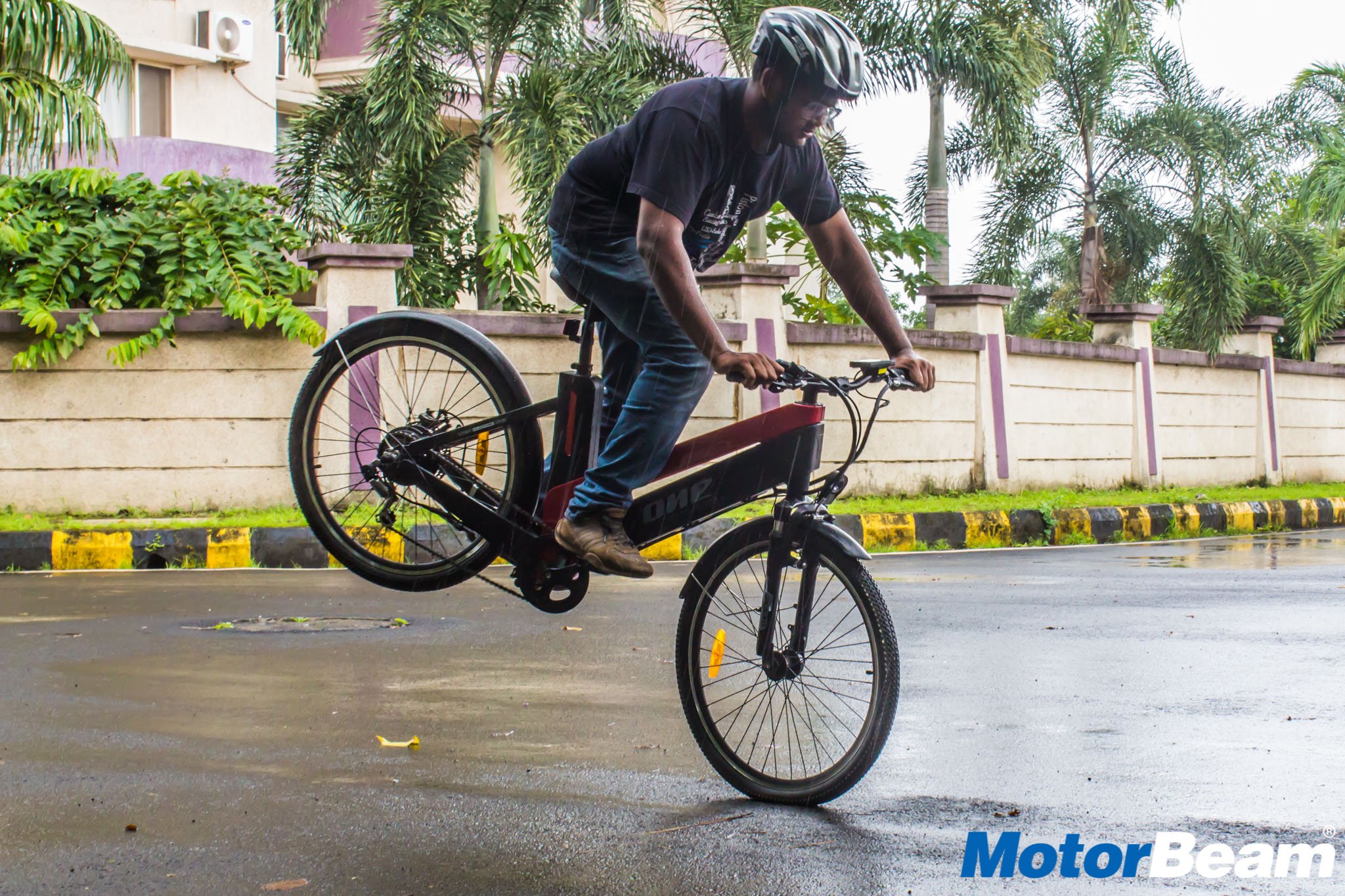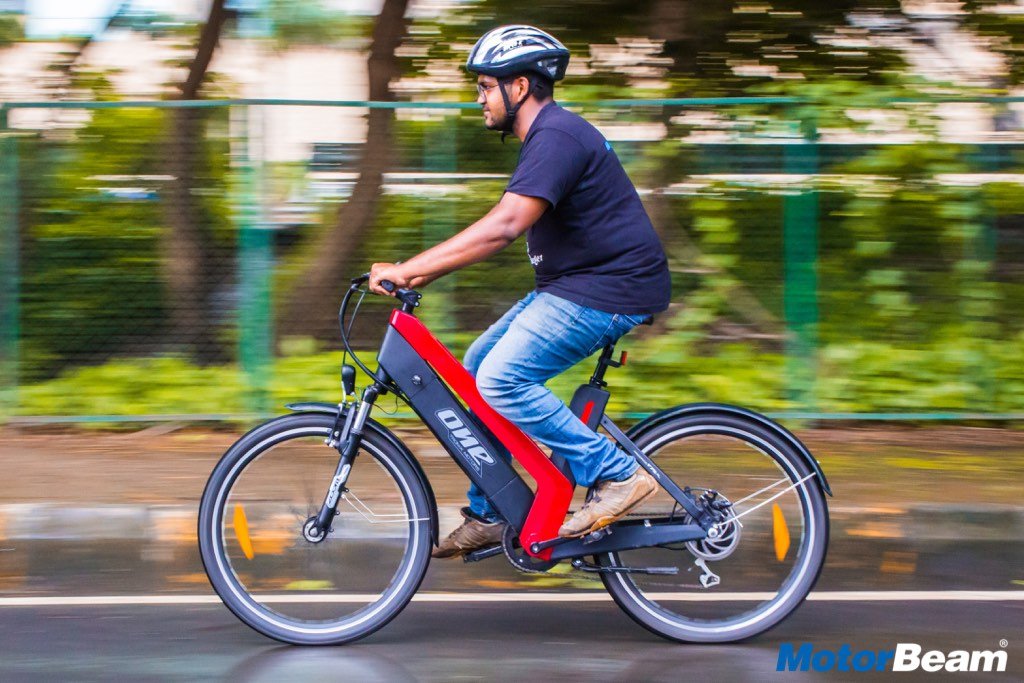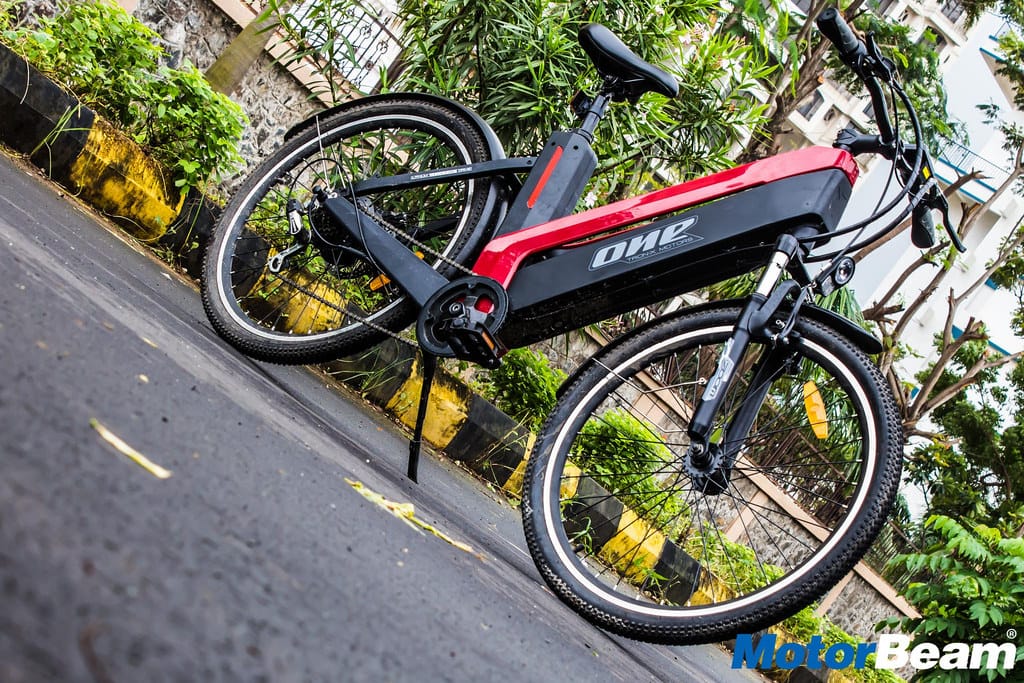One sits is an upright position just like a regular bicycle
Ergonomics– The Tron-X One has a mid-step thru frame design. What this means is that you don’t have to always swing your leg around the cycle to sit on it. You can simply put your leg across the frame and push yourself up to the seat. This is especially helpful for the elderly and women. The variation between the lowest and the highest seat position makes the cycle accessible to people of various heights but sadly isn’t the most comfortable. It just doesn’t have enough cushioning and is similar to the ones found on much cheaper cycles. The handlebar is a riser type with rubber grips and is easily reachable. However, pushing the seat higher and sitting in a more aggressive position made my palms ache. But one can always sit more upright and avoid that. Gear shifters are placed on the right-hand side of the handle and are best controlled using the thumb and index fingers.
The Tron-X One has a speedo indicated top-speed of 28.4 km/hr
Performance– Let’s come to the reason why we are testing the Tron-X One in the first place. The cycle can not only be ridden by pedalling but also by using a 250W electric motor placed inside the rear hub. This is powered by a 13.4 Ah, 500W, removable lithium battery back hidden neatly inside the downtube. On a full charge, it allowed me to go for about 50 kms without any pedal inputs. This is the full-electric mode which pushed the cycle to its maximum speed (speedometer indicated) of 28.4 km/hr using only the electric motor. Pedalling at this speed is also kind of useless as it feels like a free moving gear. But soon, I found myself using more of the pedal-assist mode (to achieve my fitness goals) which automatically activates the electric motor as you start pedalling. The pedalling allows you to actually cycle but sans the effort as the electric motor is pushing the cycle for you.
With a change in gradient the speed changes drastically
The power of the electric motor is quite likeable especially in traffic conditions
There are three pedal-assist modes, namely one, two and three. In power mode one, the battery input is the lowest while in the third mode, it is the same as in the full-electric mode. But the motor loses its breath and the cycle starts slowing down considerably while going up a slope. The performance of the One is best suited for street riding and not highway riding but it is apt for cycling enthusiasts wanting to go long distances.
The front rubber brakes felt better than the rear disc brake
Riding Dynamics – The Tron-X One, in spite of everything that it has is still a cycle and its riding ability is no different from a regular one. It is compact and agile which gives it a quick direction changing ability. The tyres provide decent grip but lose their footing on a sandy patch. As earlier mentioned, the cycle is best suited for street conditions as on a highway, it easily unsettles because of the fast moving traffic. Also, I found myself getting nervous when the cycle crossed the 36 km/hr mark after going down a slope. The front suspension does alright in absorbing those bumps but sadly, there’s no rear suspension. This becomes a problem when moving on broken patches allowing the jerks to reach your body. There is a v-brake (rubber brakes) at the front and a disc brake at the rear. I somehow found the v-brake working much better than the rear disc brake.




